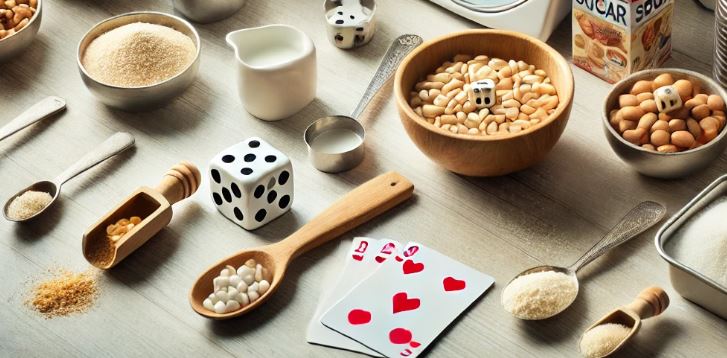I'm a participant in the Amazon Services LLC Associates Program, an affiliate advertising program designed to provide a means for me to earn fees by linking to Amazon.com and affiliated sites.
Want to know how to weigh food without a scale? Measuring ingredients accurately is crucial for successful cooking and baking. While a food scale is the most precise tool for this task, there are times when you might need to weigh food without one. In such cases, knowing alternative methods to measure food can be incredibly helpful. This guide will walk you through various ways to measure food without a scale, while also highlighting the convenience and accuracy of using a food scale. We recently made a guide on the Best Kitchen Scales, be sure to check it out.
Key Takeaways
- Food scales provide the most accurate measurements and are highly recommended for cooking and baking.
- There are several alternative methods to estimate food weight without a scale, though they may not be as precise.
- Using common kitchen tools and standard conversions can help in measuring food without a scale.
Using Common Kitchen Tools
Measuring Cups and Spoons
One of the simplest ways to measure food without a scale is by using measuring cups and spoons. Here’s how you can convert common food items:
- Flour: 1 cup of all-purpose flour is approximately 120 grams or 4.2 ounces.
- Sugar: 1 cup of granulated sugar is about 200 grams or 7.1 ounces.
- Butter: 1 cup of butter equals around 227 grams or 8 ounces.
Visual Comparisons
Another method is to use visual comparisons with everyday objects:
- Meat and Poultry: A deck of cards is roughly the size of a 3-ounce serving of meat.
- Cheese: A pair of dice is about the same size as a 1-ounce serving of cheese.
- Fruits and Vegetables: A medium-sized apple or orange is typically around 150 grams or 5.3 ounces.
Using Liquid Measurements
Water Equivalents
Since water has a consistent density, you can use it as a reference:
- 1 milliliter of water = 1 gram.
- 1 cup of water = 240 grams or 8.5 ounces.
Converting Liquid Ingredients
For other liquids, use the following conversions:
- Milk: 1 cup of milk is approximately 245 grams or 8.6 ounces.
- Oil: 1 cup of oil weighs about 218 grams or 7.7 ounces.
Standard Conversions
Common Ingredient Conversions
Here are some standard conversions to help you measure ingredients without a scale:
- 1 tablespoon of flour weighs about 8 grams.
- 1 teaspoon of sugar weighs approximately 4 grams.
- 1 tablespoon of butter is around 14 grams.
Volume to Weight
Using common volume-to-weight conversions can also be helpful:
- 1 liter of water weighs 1 kilogram.
- 1 cup of chopped vegetables typically weighs around 150 grams.
Why a Food Scale is Easier
While these methods can help in a pinch, they are not as accurate as using a food scale. A food scale ensures precise measurements, which is especially important for baking and recipes requiring exact proportions. Investing in a quality food scale can save time and improve your cooking results. For reviews on the best food scales, visit HappyFoodGeek.
Recent Developments in Measuring Tools
Advances in Kitchen Technology
The kitchen tools market has seen innovations such as smart measuring cups and app-connected food scales, which offer enhanced accuracy and convenience. These tools can help you track nutritional information and ensure precise measurements with minimal effort.
Sustainable and Eco-Friendly Options
There is also a growing trend towards sustainable and eco-friendly measuring tools made from biodegradable materials. These options are both functional and environmentally conscious.
Top Experts and Entities in the Field
America’s Test Kitchen
America’s Test Kitchen frequently reviews and tests kitchen tools, providing expert advice on the best food scales and measuring techniques.
Consumer Reports
Consumer Reports offers in-depth evaluations of kitchen gadgets, helping consumers make informed decisions based on comprehensive testing.
Key Takeaways – How to Weigh Food Without a Scale
- Food scales provide the most accurate measurements.
- Alternative methods using common kitchen tools can help measure food without a scale.
- Recent innovations in kitchen tools offer greater accuracy and convenience.
Authorship
Written by HappyFoodGeek, an expert in kitchen gadgets and culinary tools with years of experience. For more articles and reviews on kitchen essentials, visit HappyFoodGeek.
